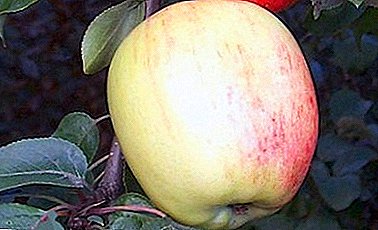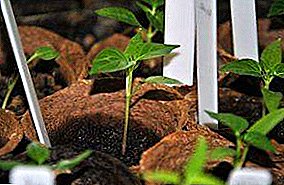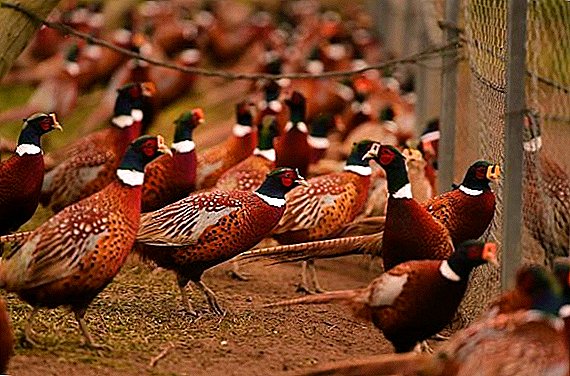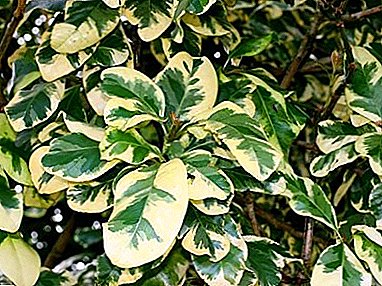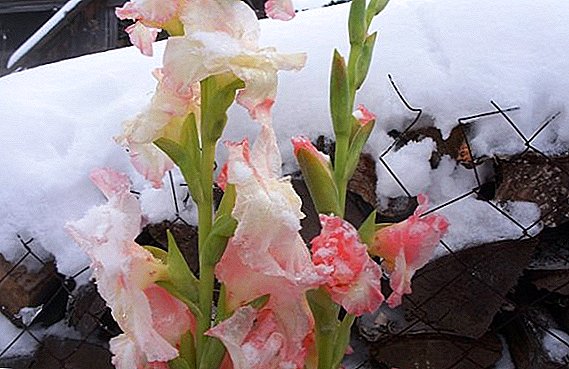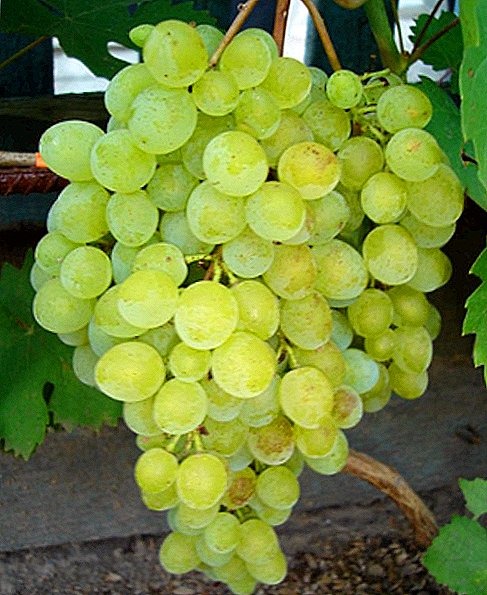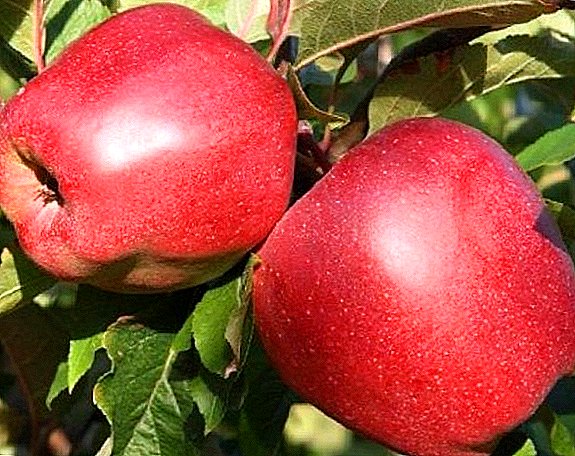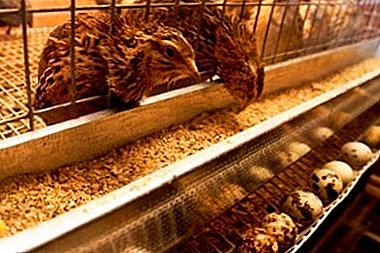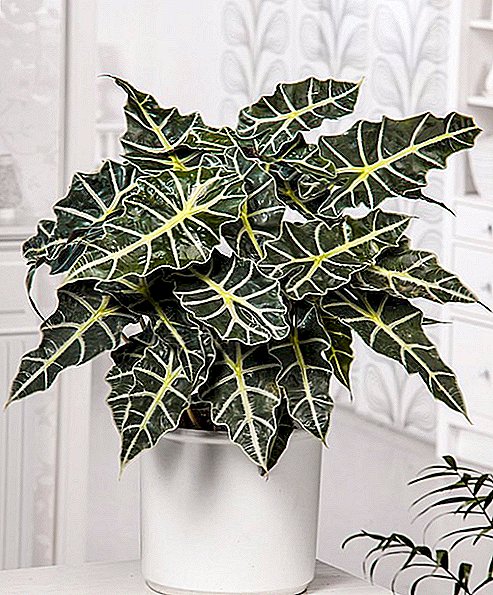 Among the bright ornamental plants in modern interiors you can often find a tropical flower Alozy Polly. He draws attention with his unique appearance, purposefully conquering the preferences of gardeners and florists. How to grow a guest from the tropics and care for her, read on.
Among the bright ornamental plants in modern interiors you can often find a tropical flower Alozy Polly. He draws attention with his unique appearance, purposefully conquering the preferences of gardeners and florists. How to grow a guest from the tropics and care for her, read on.
Plant description
Alokaziya Polly is the original representative of the Aroid family and is a hybrid version of Alokaziya Sander.
It is easily recognizable by its memorable appearance:
- 70 cm tall bush;
- short rhizome;
- dark green foliage with clearly visible metallic patches and contrasting yellow (down to white) streaks;
- the edges of the leaves end with the teeth, and their end is pointed;
- foliage has impressive size - up to 50 cm in length and up to 20 cm in width, it is fragile and juicy, keeps on long petioles.
Did you know? In Russia, the flower appeared thanks to Catherine II, who was delighted with its appearance and used as a decorative ornament of the summer garden.
The flower appeared thanks to the efforts of the American postman and part-time amateur breeder - Salvador Mauri. Mauri organized his own tropical mini-garden and was engaged in selection of crops growing in his nursery. The result of such selective procedures was the appearance of Polly's alokaziya: it is not known exactly which types of alokazies were used in the selective process. As for the name, Mauri called his creation a name that he liked very much.
Conditions for successful home cultivation
The success of growing alokaziya in the home depends on the provision of proper conditions for it: choosing the right place, providing the necessary temperature and humidity.
Location
Having decided to purchase Polly's Alokazia, it is important to determine exactly the place she occupies in your home. Thus, the hybrid form prefers good illumination, but does not like direct sunlight. The ideal place in the house - the western or eastern side.

Temperature
Temperature mode for Polly depends on what time of year outside the window. In summer, it needs to provide conditions with a temperature of + 22 ... + 26 ° C. In winter, the thermometer should not fall below + 18 ° C. Do not rush to relocate the flower on the balcony or terrace as soon as it gets warmer in the summer. The fact is that if there is a jump of 6 ° C between day and night temperatures, this can adversely affect the plant.
Important! Tropical beauty is afraid of drafts and even small gusts of wind. Also, do not leave it in the rain.
Humidity
The tropical origin of the flower suggests that it welcomes high humidity. Dryness adversely affects the culture. In the room where the shrub is located, the air humidity should exceed 65%. The neighborhood with a tank filled with pebbles, expanded clay and water will help to maintain an optimal wet regime. The bush will tell you about its dissatisfaction with the environmental conditions by withering and falling leaves.
Home care
In order for Alokaziya Polly to grow qualitatively, to please with her spectacular appearance and flowering, it is necessary to ensure her proper care. Read more about this below.

Watering
Polly must be provided with regular and moderate watering. So, in the summer, it needs moisture every 1-2 days; in the winter, the number of waterings decreases to 1 time per week. It is necessary to control the number of waterings, focusing on the top soil layer: if it dries 1-1.5 cm, then the flower should be moistened. Water for irrigation Alokazii should be warm (+ 25 ° C), filtered and settled. Watering method - drip. In addition to watering, it is necessary to carry out the procedure of spraying the bush: in the summer - once a week, in the winter - once in two weeks.
Important! Try not to overdo it with the number of watering, because waterlogging is just as detrimental to culture as drying.
Top dressing
Alokaziya Polly needs regular fertilizers from April to October, especially they are relevant in spring and summer, when the flower is actively gaining green mass. The frequency of applying feedings - 1 time in 14 days. It is best to take complex mineral fertilizers for deciduous plants, such as "Agricola 7", "Success", "Gilea", "Stimulus", "Fertimix", "Saprogum" and others. In addition to mineral fertilizers, organic must also be used - this is compost, humus (proportion - 1 to 30).

In winter, the shrub hibernates, so it is not necessary to fertilize it. If you notice that even in winter your flower continues to grow, then you can fertilize it once a month, but dilute the fertilizer by taking three times more water than indicated in the manufacturer's instructions.
Pruning
This stage of care is not required when growing alokaziya. Pruning shrub stands in case of emergency, namely during attacks of diseases and pests. Eliminate sore parts, it is also necessary to cut off faded leaves and flowers. For cutting you need to pick up a sharp and sterile instrument.
Did you know? Water droplets can form on the leaves of alokaziya - this may indicate either overmoistening of the crop, or a flower warns you that rainy weather is coming. In connection with this fact, Polly is popularly called the live barometer.
Transfer
It is recommended that the young flowers of Alokazia Polly be transplanted each year in early spring, before the vegetation and active growth phase begins, around April. Plants older than 5 years do not need to be replanted annually, only once every three years.
Transplantation is carried out by transshipment, since the plant reacts painfully even to light damage to the roots. Therefore, it is necessary to keep the earth lump in integrity.

Before a transplant, the following steps must be performed:
- Soil preparation. Culture prefers loose, nutritious, slightly acidic (pH from 5.5 to 6) water and breathable ground. It is easiest to get the necessary substrate for decorative leafy crops by purchasing it in the store. But if you have the right ingredients for Polly's quality, Polly can prepare the soil yourself. To do this, mix the leaf ground, coniferous soil, peat, coarse sand or perlite and sphagnum (pre-crushed). The recommended proportions are 4: 4: 4: 1: 1. If the flower is more than 3 years old, then 1 part of humus can be added to the prepared substrate. The lowest soil layer should consist of drainage - you can use pebbles, expanded clay, fine gravel, broken majolica.
- Choice of transfer capacity. Firstly, the pot should be deep, and secondly, its parameters should be 3 cm more than the previous one. It is best to take a plastic or ceramic container, always with drainage holes.
- Putting the soil mixture into the prepared container - first, the drainage layer, after the prepared substrate.
Important! If Polly's roots are embedded in drainage holes, they must be gently pushed out using a wooden stick or pencil.
The direct transplant procedure consists of:
- pulling the plant out of the previous tank. To carry out this action should be carefully and carefully, so as not to damage either the stems, or the leaves, or the shoots, or the roots of Polly;
- shaking the plant lightly to crumble the ground;
- placing rhizomes in the center of the new pot;
- falling asleep roots substrate and its seal;
- abundant watering of transplanted alokaziya;
- eliminate the water collected in the pan after 2 hours.
Flowering and reproduction
Often florists can hear complaints that Alokaziya refuses to bloom. This is due to the peculiarities of culture: Polly can bloom for the first time only after she is 5 years old. You can admire the flower of culture in the spring, although it is not endowed with a special decoration.

A flower grows on a thick stalk and consists of a cob and bedspread. It acquires a white or yellowish color and spreads a very strong aroma that not everyone likes and can even provoke a headache. Due to the fact that the flowers of alokaziya differ in an impressive size, during the period of flowering the culture may begin to fall off the leaves, since the plant spends all its power on the inflorescences.
In order not to deplete the plants, some growers recommend pruning the flower even before its flowering, while treating the cut point with charcoal of wood. But you can not do this, give a tropical beauty to bloom and conduct pollination to form berries in which seeds will ripen, suitable for future sowing. If you do not set a goal to get a seed, then the flower should be cut off immediately after flowering stops.
Important! Pollo's Alocasia is a poisonous plant: its juice, which has fallen on the skin or mucous membranes, can provoke redness and allergic reactions. Therefore, during the care of the culture you need to be extremely careful.As for reproduction, it is most effective to carry it out by grafting or dividing the rhizome or tubers. More on each method below.
Cuttings
For rooting can be taken as a cutting from the top, cut at an angle of 45 °, and sheet. Selected cuttings should be left for 3-4 hours to dry, then treat with root-stimulating agent and put into the soil mixture consisting of sand and peat in the same proportions. Cutting need to provide greenhouse conditions: cover with foil or plastic bag.

Further care of the cutting consists of regular airing and maintaining humidity and soil. Root cuttings can also be in pre-boiled water, to which a piece of coal from wood is added. When organizing a proper care handle, it will take root within a month and acquire a new leaflet. It is possible to conduct grafting at any time of the year, except for the rest period of the plant.
Division of rhizomes or tubers
The easiest and most popular breeding method is rhizome division.
Important! This method of reproduction is actually carried out in the spring, during the transplantation of culture.
The procedure for dividing the rhizomes consists of the following steps:
- Pulling aloe Polly from the previous tank.
- Cleaning the roots of earthen coma, up to washing.
- Cutting the rhizome with a sharp knife into several parts - the number of parts depends on the presence of growth points or leaf rosettes, which should be on each cut part.
- Handling cut places with crushed coal.
- Drying wounds - cut off part of the rhizome should be left for an hour.
- Planting parts in separate containers filled with prepared disinfected primer.
- Watering, which should be accompanied by draining of water accumulated in the pan (after 2 hours).

Another fairly easy way for Polly to breed is by tubers that sprout on the surface of the ground in March or May.
It is carried out in the following way:
- First you need to choose tubers for transplanting.
- Selected specimens should be carefully cut and placed in a container filled with wet sphagnum. Moss should always be kept wet.
- Above the stored tubers need to create a greenhouse effect, covering them with a bag or film of polyethylene.
- It is necessary to keep the tubers in sphagnum until the first leaf appears on such a peculiar seedling, then they need to be transplanted into a constant container filled with the substrate.
Planted alokaziya need to put in a well-lit warm (+ 23 ° C) room, regularly watered and sprayed.
Also read about the features of the care of Alocasia large root.
Difficulties in growing
Flower growers who have experience growing Polly alokaziya know that this process is accompanied by some difficulties, namely the attacks of diseases and pests. Next, we take a closer look at the nature of such problems and measures to eliminate them.

Diseases
Most diseases of alokazii provoked non-compliance with the rules of care:
- Blanching and dull leaves of alokaziya Polly says that the flower suffers from a lack of light. The treatment consists in moving the plant to a place that is distinguished by a large amount of light.
- The appearance of spots on the foliage and their drying is a signal that the culture is supersaturated with sunlight and it needs to provide more shaded conditions.
- If the leaves began to fall off with Polly, then it means that the root system began to rot. Such a problem is caused by excessive watering, and its elimination is to stop the moistening of the flower until the soil dries out. If this does not help, then the flower must be transplanted immediately before carefully examining the root system, removing the diseased roots and treating all the wounds with copper sulfate (1 hl / 2 l of water).
- Polly's growth slowdown is the result of a lack of nitrogen, which is necessary to increase the green mass of the plant. The measure of the struggle - nitrogen fertilizer.
Did you know? Alocasia is known for its healing properties: it is used to prepare drugs for pain in the joints and back. It can also be used to disinfect and heal wounds.
Pests
The main pests attacking Polly's alokaziya are:
- Aphid- can get on the flower along with contaminated soil or penetrate through the open window. The insect organizes whole colonies on the body of the plant. You can recognize the pest by green, orange or gray color. Eliminate uninvited guests will help treatment with a solution prepared from liquid soap (2 tsp.), Water (2 tbsp.) And vegetable oil (1 tbsp.). You can also spray the culture "Fitoverm" (4 ml / liter of water).
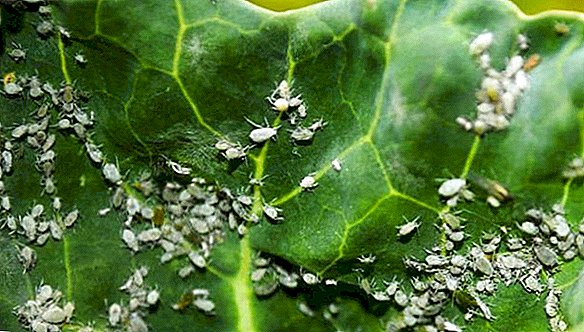
- Shchitovka - has the appearance of small brown, hilly scales, which stick tightly to the plant tissues. The danger of a pest is that it sucks the juice of a flower. The source of infection is soil or neighboring crops. The measure to combat the shield is to treat the plant with a soap-and-water solution (15 g of liquid soap / 1 l of water) using a soft brush or rag. If the solution did not produce the expected effect, then it is worth resorting to the help of the insecticide "Aktara" (0.8 g / 1 l of water).

- Spider mite - signals itself with white dots and thin cobwebs, located on the leaf plates of alokazii. The tick feeds on Polly sap, as a result of which the flower is depleted and dies. Means for eliminating spider mites - "Aktellik" (2 ml / 2 l of water).
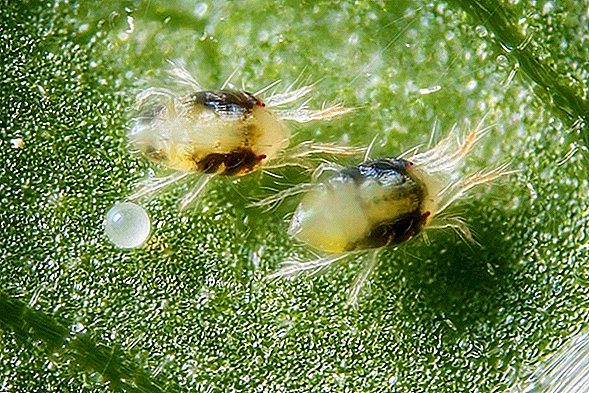
- Mealybug - is a small insect that emits a white substance that looks like cotton. The source of the pest is dry air, neighboring plants. The measure of the struggle is wiping the affected parts of the culture with a cotton pad soaked in calendula tincture or soapy water. Also bring the effect of spraying the flower "Aktar" (0.8 g / 1 l of water).
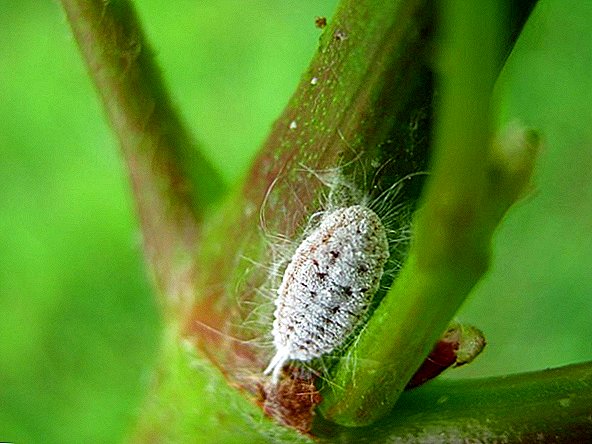
- White fly - an insect that enters the plant through open windows or contaminated soil. The danger of a pest in its secretions, which contain spores of a black fungus, which leads to a slower growth of the flower, and soon its death. Treatment of the "Confidor" solution (0.1 ml / 1 l of water) will help eliminate the whitefly.
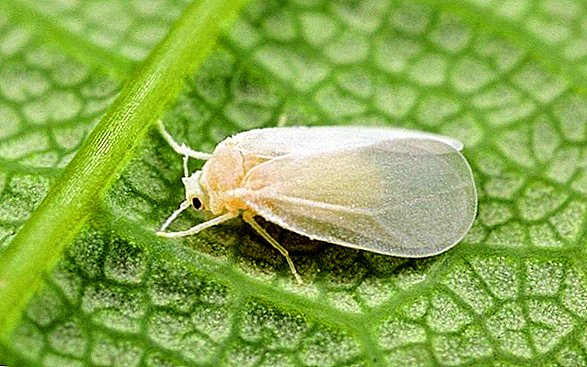
As you can see, even tropical plants take root well in indoor conditions. An example of this is Polly's Alokaziya - a hybrid form of a tropical flower, distinguished by its original appearance. When organizing the right care culture will thank you for its high decorative properties.







